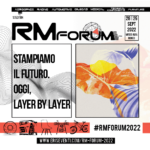Bill Kreysler, head of the architectural composite company Kreysler and Associates, has seen an encouraging trend in architects’ attitudes about composite materials in the past decade. “Ten years ago, we were going to architects and trying to explain what we did and why they should consider us. Architects thought of fiberglass as a cheap substitute for something that they wanted but couldn’t afford,” he says. “Today, that is changing fast. Nowadays composites are recognized in the building code as a legitimate building material, and they are being used more and more on projects as architects explore new ways of designing more complicated shapes.”
One example is the open-air BHP Billiton Pavilion for San Antonio River Foundations’ Confluence Park in Texas, designed by Andrew Kudless of Matsys design studio. The pavilion is the centerpiece of the 3.5-acre park, which overlooks the confluence of the San Antonio River and San Pedro Creek. The architect wanted to mill the forms for the pavilion’s walls out of foam using CNC and robots, then use those foam models to create GFRP forms for casting concrete. But the builder, unfamiliar with composite materials, considered fiberglass molds only after the bids for wood molds came in extremely high. Kreysler & Associates was able to produce the required molds at a significantly lower cost.
The molds for the 30-foot-high, poured concrete “petal” walls had to carry the tremendous weight of wet concrete. “The fiberglass had to be dimensionally stable and able to withstand 500 pounds per square foot of hydraulic pressure,” says Kreysler. “That took a lot of engineering of the material. It was thicker, had some stiffening ribs and included a rather elaborate steel support frame.” As they were reused, the fiberglass molds retained their initial shape. That was another advantage over wood molds, which absorb water and change shape as they’re reused.
Kreysler & Associates worked closely with Kudless and Lake|Flato Architects throughout the project. “Partnership early in a project is important, especially on something as unusual as this, so that the design is grounded in a feasible means of fabricating it,” says Joshua Zabel, vice president of business development at Kreysler and Associates and the lead on the project. “Early ideas about how to make the molds, how they might be transported, in how many pieces and how to assemble them was useful information that we provided as the project progressed.”













